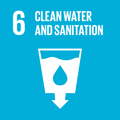- Docente: Caterina Florescu
- Credits: 3
- SSD: MED/42
- Language: English
- Teaching Mode: Traditional lectures
- Campus: Rimini
- Corso: Single cycle degree programme (LMCU) in Pharmacy (cod. 9078)
Learning outcomes
At the end of the module the student knows: - the contents of epidemiological studies: data sources, frequency and risk measures; - the epidemiology and general prevention of infectious diseases; - the epidemiology of chronic-degenerative diseases.
Course contents
EPIDEMIOLOGY
Definition, scope and uses of epidemiology. Definition of health and disease. Determinants of health and disease.Elements of Comprehensive Primary Health Care.Main measures of association: incidence, prevalence, rates specific and standardized, relative risks and odds ratio.
GENERAL EPIDEMIOLOGY OF INFECTIOUS DISEASES
General epidemiology: reservoirs and sources of infection. Routes of entry and eliminate infectious agents. Direct and indirect transmission (through inanimate vehicles and carriers) of infectious diseases. ways of appearance of disease in the population (sporadic trends, endemic, epidemic and pandemic).
CHRONIC DISEASES AND THEIR DETERMINANTS. Epidemiology of chronic non communicable disease. Prevention and monitoring concepts: chronic obstructive, ischemic heart diseases, diabetes, tumors.
GENERAL CONCEPTS OF PREVENTION
Objectives and methods of prevention. Primary prevention, secondary prevention, tertiary prevention. Screening test.
GENERAL PROPHYLAXIS OF INFECTIOUS DISEASES AND PARASITIC.
Notification of infectious diseases, diagnostic tests; health surveillance.
Vaccine prophylaxis. Constitution requirements; precautions and contraindications. Schedule of vaccinations for the new born.
Immunoglobulins. Chemoprophylaxis.
EPIDEMIOLOGY AND PROPHYLAXIS OF INFECTIOUS DISEASES infectious diseases prevalent air transmission (influenza, meningitis c.s.e.); infectious diseases faecal-oral transmission (viral hepatitis virus A and E); infectious diseases by direct contact to blood and / or sexual transmission (viral hepatitis virus B, C, D); vector-borne diseases (Lyme disease); tetanus. COVID-19 Pandemic. Health-care related infections
Teaching methods
Frontal lessons
Working group
Assessment methods
The examination aims to verify the achievement of learning objectives.
The exam consists of a written test (24 multiple choice questions + 3 open questions).
Teaching tools
Presentations will be made available.
Office hours
See the website of Caterina Florescu
SDGs



This teaching activity contributes to the achievement of the Sustainable Development Goals of the UN 2030 Agenda.
